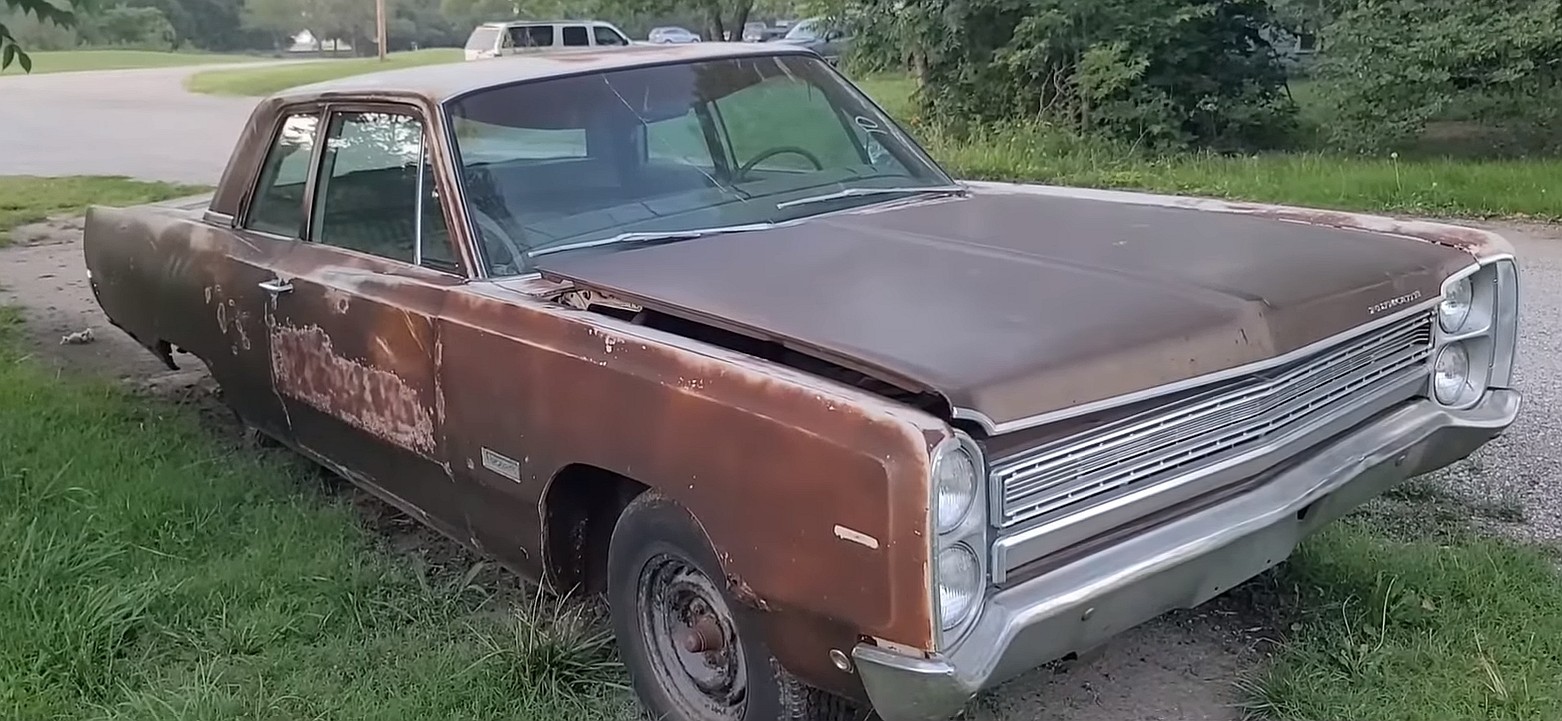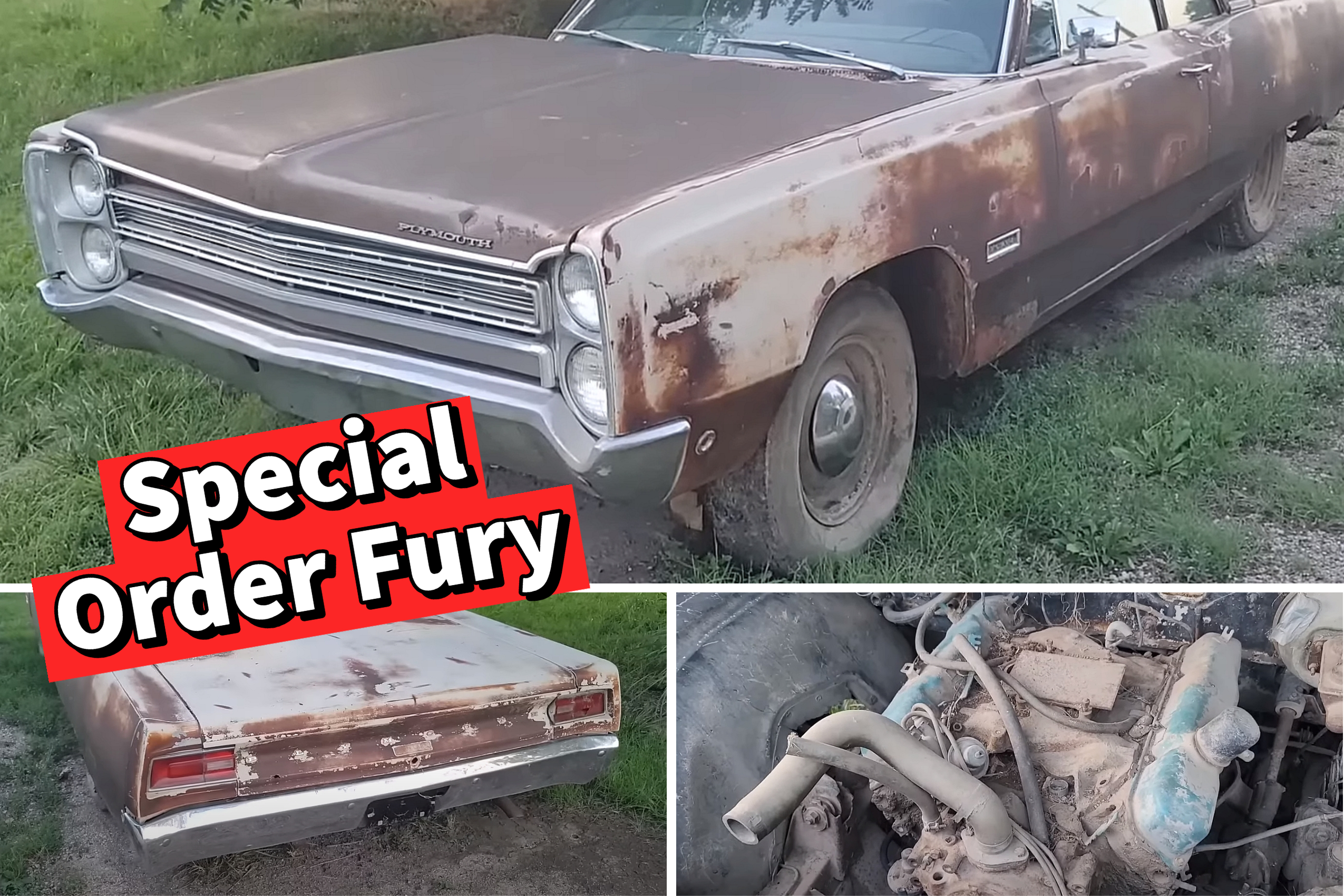What’s the first thing you think about when you hear the name Plymouth Fury? I bet it’s Stephen King’s “Christine,” which featured a 1958 iteration of the full-size car. Well, the nameplate extends far beyond its role as an evil car.
Introduced in 1956 as a sub-series of the Belvedere, the Fury became a stand-alone model in 1959. Produced as either a full-size or a midsize car, it soldiered on until 1978. And even though it’s not as celebrated as other Mopars from the era, it was a popular rig and high-volume seller for most of its time in showrooms.
Unlike other Plymouths, the Fury wasn’t offered with the iconic 426-cubic-inch (7.0-liter) HEMI V8 in the late 1960s and 1970s. But that’s not to say it didn’t participate in the muscle car craze. Engine options included both the 383-cubic-inch (6.3-liter) and 440-cubic-inch (7.2-liter) big-block V8s; the latter rated at a solid 375 horsepower. In the mid-1960s, some Furys were also equipped with the Wedge V8, while some even got the Max Wedge treatment.

All told, there’s no shortage of rare vehicles when it comes to the Fury. But I’m not here to talk about the super scarce Max Wedge of the beefed-up hardtops fitted with the 440 RB. The derelict 1968 Fury you see here is an unassuming junkyard gem thanks to a few special features.
Rescued by YouTube’s “Mr. Goodpliers” from a sad life in a field, the two-door sedan looks like your average late-1960s Fury that no one wants to save. It’s covered in surface rust, rotten lower quarters, and it looks rather mundane all around. However, the VIN plates and the paint suggest there’s more to this unassuming Mopar.
For starters, there are clear traces of the car’s original white paint. Moreover, both the doors and the roof show signs of police-style decals. Is it a Pursuit vehicle? Well, the jury is still out on that since it doesn’t look like the roof had proper police lights. However, one of the VIN plates says it was a “special order” car.
So while it might not have been a Pursuit-spec version for patrol units, it most definitely spent its early years in a law enforcement squad, perhaps as a main officer ride. At least that would explain why there’s no “K” in the VIN. If you’re unfamiliar with Pursuit cars from the era, police-spec Fury VINs started with “PK.” This one shows a “PE,” which designates a Plymouth Fury I, but it’s a known fact that not all police cars ordered back in the day were Pursuit cruisers.

Why is this important, you ask? Well, it would make this Fury a very rare car. The Fury was very popular in 1968, moving a whopping 309,517 units in all body styles. However, only 5,788 were ordered as Fury I two-door sedans like this one. And since many were discarded in junkyards after a few years, we’re probably looking at one of fewer than 1,000 survivors. The “special order” status and its early career as an institutional vehicle move it into one-of-few territory.
What’s under the hood, ask? This Fury still packs its factory V8, which appears to be a four-barrel 383 B-block. The mill was rated at 330 horsepower when new. The VIN also confirms a three-speed automatic, a 3.23 Sure-Grip differential, AM radio, and air conditioning. The options and the beige interior align with what non-patrol cars were ordered in the 1960s.
But regardless of what this Fury was used for in its early days, our host is determined to restore it. And that’s downright awesome, given that most of these Furys were left to rot away in junkyards and backyards.
